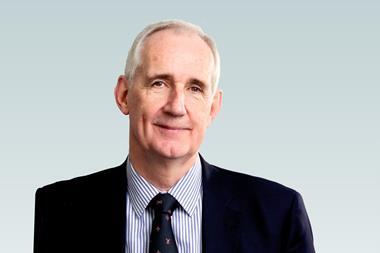Alkaline growth  up 22% by value and 37% by volume [Information Resources, 52 w/e June 02 MAT] is being driven both by increased acquisition of electronic products and by heavy promotional activity, especially in grocery multiples.
Pifco is the latest brand to enter the high-drain alkaline fray with its Optimax Plus range, alongside existing premium brands such as Duracell UltraM3 and the Energizer titanium range, both launched last year. More recently, Panasonic launched its third generation high-drain alkaline, the PowerMax3, utilising a new concentrated power' technology and backed up by an advertising campaign.
But given that no promotion can be a permanent fixture without turning the category into a commodity, it's important to look at more long-term drivers for growth  like new product development. Here, much of the buzz is centred on lithium technology, with several manufacturers producing ranges intended for the booming digital photography sector  one which offers "long-term growth potential", according to Energizer marketing manager Paul Harvey. "Lithium polymer can put much more power in a much smaller battery," explains Paul Duke of the British Battery Manufacturers' Association. "I'd expect it to displace both zinc and alkaline batteries within a few years."
Rechargeables are also gaining ground in photography and other areas  independent research shows that one in three consumers now uses rechargeables in the home. "Rechargeable batteries are the future, they are environment friendly," says Uniross marketing manager Simon West. They're also very cost-effective  and this simple fact is being brought home to more and more consumers.
"A rechargeable can be charged 1,000 times during its lifespan; a disposable battery can only be used until it ceases to function and must then be thrown away. It only costs pennies to recharge batteries and savings can easily reach £240 for a digital photo camera in a year. Add to that the average number of battery-powered home appliances and toys and the savings can be substantial."
In October, Uniross will introduce a high-capacity nickel metal hydride AA rechargeable battery, and a new, ultra-fast Intelligent Charger for AA and AAA rechargeables which can recharge four AA batteries in less than two hours. Rayovac, Varta and Energizer are also among those manufacturers producing nickel metal hydride and lithium rechargeables intended for the digital photo sector. These products have been proved to last more than twice as long as standard alkaline and can recharge effectively up to 1,000 times, although there has been criticism of the charging time. Rayovac, which recently launched the world's first one-hour charger, has announced plans to launch IC3 Â the first 15-minute charger.
Meanwhile, Varta claims to be challenging the other brands with the launch of its Precise Energy concept. "Research has shown that the battery user no longer expects just power and long life from their batteries," says senior key account manager Paul Fildes. "Modern hi-tech appliances  such as digital cameras  require specifically available energy requirements for different mode functions."
To this end, Varta has developed Maxi-Tech  the result of a new, patented zinc gel structure.
On the negative side, it looks as if that old workhorse, zinc carbon, is being squeezed out.
The category has lost 42% market share since 1998 and manufacturers are disappointed because they believe zinc offers good value and performance in low-drain appliances.
{{FOCUS ON }}
Pifco is the latest brand to enter the high-drain alkaline fray with its Optimax Plus range, alongside existing premium brands such as Duracell UltraM3 and the Energizer titanium range, both launched last year. More recently, Panasonic launched its third generation high-drain alkaline, the PowerMax3, utilising a new concentrated power' technology and backed up by an advertising campaign.
But given that no promotion can be a permanent fixture without turning the category into a commodity, it's important to look at more long-term drivers for growth  like new product development. Here, much of the buzz is centred on lithium technology, with several manufacturers producing ranges intended for the booming digital photography sector  one which offers "long-term growth potential", according to Energizer marketing manager Paul Harvey. "Lithium polymer can put much more power in a much smaller battery," explains Paul Duke of the British Battery Manufacturers' Association. "I'd expect it to displace both zinc and alkaline batteries within a few years."
Rechargeables are also gaining ground in photography and other areas  independent research shows that one in three consumers now uses rechargeables in the home. "Rechargeable batteries are the future, they are environment friendly," says Uniross marketing manager Simon West. They're also very cost-effective  and this simple fact is being brought home to more and more consumers.
"A rechargeable can be charged 1,000 times during its lifespan; a disposable battery can only be used until it ceases to function and must then be thrown away. It only costs pennies to recharge batteries and savings can easily reach £240 for a digital photo camera in a year. Add to that the average number of battery-powered home appliances and toys and the savings can be substantial."
In October, Uniross will introduce a high-capacity nickel metal hydride AA rechargeable battery, and a new, ultra-fast Intelligent Charger for AA and AAA rechargeables which can recharge four AA batteries in less than two hours. Rayovac, Varta and Energizer are also among those manufacturers producing nickel metal hydride and lithium rechargeables intended for the digital photo sector. These products have been proved to last more than twice as long as standard alkaline and can recharge effectively up to 1,000 times, although there has been criticism of the charging time. Rayovac, which recently launched the world's first one-hour charger, has announced plans to launch IC3 Â the first 15-minute charger.
Meanwhile, Varta claims to be challenging the other brands with the launch of its Precise Energy concept. "Research has shown that the battery user no longer expects just power and long life from their batteries," says senior key account manager Paul Fildes. "Modern hi-tech appliances  such as digital cameras  require specifically available energy requirements for different mode functions."
To this end, Varta has developed Maxi-Tech  the result of a new, patented zinc gel structure.
On the negative side, it looks as if that old workhorse, zinc carbon, is being squeezed out.
The category has lost 42% market share since 1998 and manufacturers are disappointed because they believe zinc offers good value and performance in low-drain appliances.
{{FOCUS ON }}















No comments yet